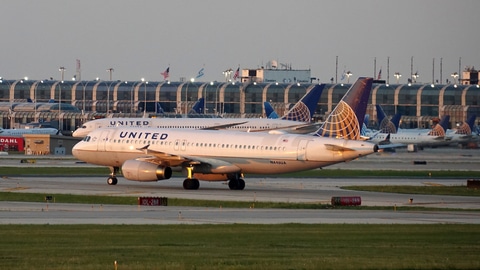The good news is that demand for U.S. air travel has fully recovered from its near collapse during the COVID-19 pandemic. But the bad news is that the aviation system is having trouble coping with surging demand. To be sure, several airlines have had meltdowns this year, but federal policies—set largely by Congress—have played a key role in these air travel problems.
In 2020, Congress provided large-scale grants and loans to passenger airlines, aiming to preserve airline jobs so the airlines would be ready when growth resumed. Unfortunately, most U.S. airlines downsized their workforces, offering generous buy-outs to experienced pilots and other flight crew members. So when travel demand began recovering in 2021 and especially 2022, most airlines were seriously short of flight crew members. Pilots, in particular, could not just go back on duty after six, nine, or 12 months without flying. Many had to spend significant time on flight simulators to get requalified to fly. There is still a serious shortage of airline pilots.
This year, U.S. air travel demand has soared. U.S. Department of Transportation data show that in May 2023, domestic and international air travel set new records for that month. In August, Airports Council International-North America reported that domestic air passenger traffic this year is 26% higher than in 2021, and international traffic at U.S. airports has more than doubled since 2021. Airlines and airports are still struggling to cope with this rapid growth.
Summer weather is always full of thunderstorms, which lead to flight delays, re-routings, and sometimes cancellations. But another major cause of delays is shortages of air traffic controllers. It’s widely known that more than half of all U.S. air travel delays occur in the congested airspace of the New York/New Jersey metro area. Two of this country’s most understaffed air traffic control facilities are New York Center (for high-altitude flights) and New York TRACON (which channels arrivals and departures to and from airports like LaGuardia, Kennedy, and Newark). These two facilities have only about half as many fully qualified air traffic controllers as they should, with the rest being only trainees.
The Federal Aviation Administration (FAA) has failed to ask for enough money to overcome these chronic shortages because its requests must comply with White House limits on domestic spending. Oblivious to the air traffic controller shortages, Congress continues to fund inadequate controller staffing.
FAA has also failed to “deconflict” the spaghetti strands of flight paths into and out of not only the big three passenger airports but also numerous smaller airports in the same metro area, such as Teterboro and Westchester. Over the past 12 years, FAA’s “Metroplex” program deconflicted airspace in 10 major metro areas, including Dallas, Houston, Los Angeles, Miami, and San Francisco. The New York region airspace was initially included, but—fearing blowback from powerful members of Congress over change in noise exposure—FAA early on deleted New York from the program, despite it being by far the most-congested airspace in the country.
These air traffic control problems are an institutional failure. FAA is part of the federal budget, funded by aviation user taxes and general federal revenue. Over the past 35 years, nearly all industrial governments have converted their air traffic agencies into public utilities, outside the government budget. Like other utilities, these air traffic control (ATC) utilities are funded by charges paid to the utility (not to the government) by users of the airspace. The ATC utilities can issue revenue bonds based on their user-fee revenues to pay for large-scale modernization efforts. And they operate on budgets that are not second-guessed by legislators or government accountants to keep their facilities properly staffed. Two of the best examples are Nav Canada and the United Kingdom’s NATS (National Air Traffic Services).
Last decade, a coalition of airlines and the Business Roundtable worked out a detailed proposal for a U.S. nonprofit air traffic utility similar to Nav Canada. It won the support of the air traffic controllers’ union—the National Air Traffic Controllers Association—and had bipartisan support from former FAA and U.S. transportation department officials. The bill twice passed the House Transportation Committee, but never reached the House floor.
This year, no such provision is in prospect as Congress works toward a five-year FAA reauthorization bill. But without major institutional reform, FAA will continue to struggle with congestion and air travel delays, even after airlines and airports are fully staffed to meet today’s unprecedented air travel demand.
This column first appeared at the Georgia Public Policy Foundation.

